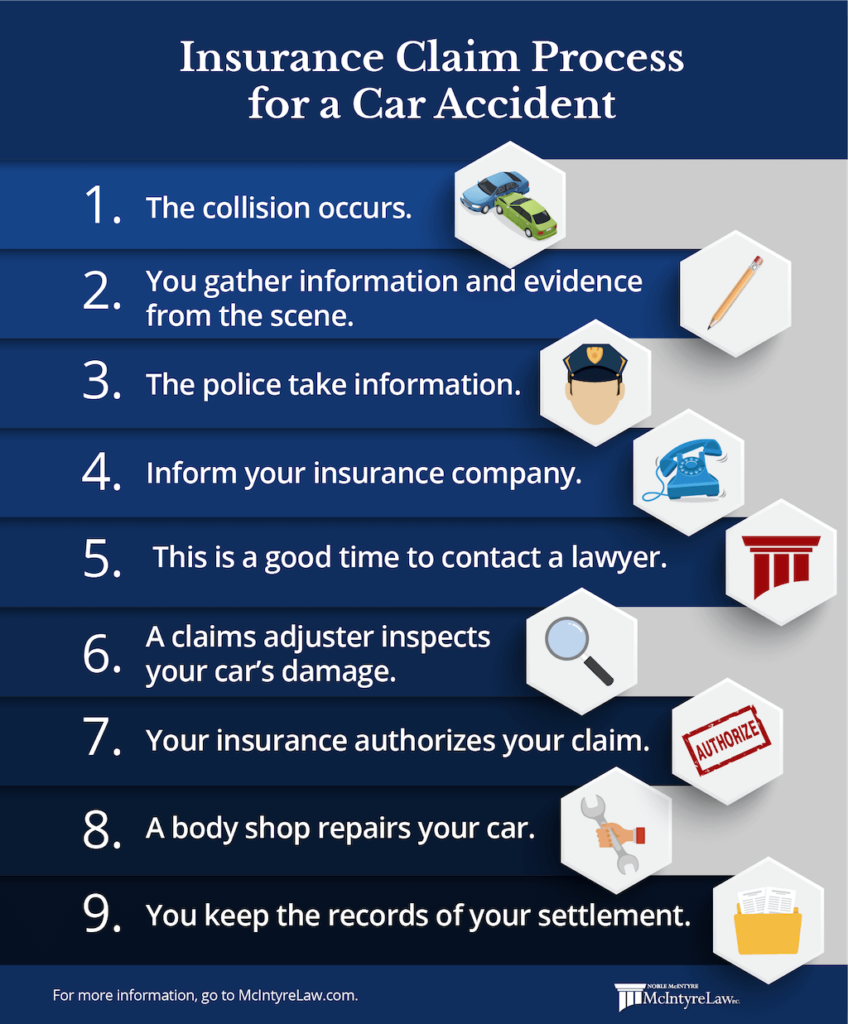The Process Of Filing A Claim With An Accident Lawyer: A Comprehensive Guide

The Process of Filing a Claim with an Accident Lawyer: A Comprehensive Guide
Related Articles: The Process of Filing a Claim with an Accident Lawyer: A Comprehensive Guide
- What Every Accident Victim Should Know About Hiring A Lawyer
- How Accident Lawyers Secure The Best Settlements: A Deep Dive Into Negotiation Strategies
- Key Documents You Need When Working With An Accident Lawyer: A Comprehensive Guide
- Common Challenges In Accident Cases And How Lawyers Solve Them
- Common Challenges In Accident Cases And How Lawyers Solve Them
Introduction
Get ready to uncover fascinating insights about The Process of Filing a Claim with an Accident Lawyer: A Comprehensive Guide. Through this article, we aim to engage, inform, and inspire you with comprehensive information and practical perspectives.
Video about The Process of Filing a Claim with an Accident Lawyer: A Comprehensive Guide
The Process of Filing a Claim with an Accident Lawyer: A Comprehensive Guide

Accidents, whether car crashes, slip-and-falls, or workplace injuries, can be devastating, leaving victims with physical injuries, emotional trauma, and significant financial burdens. Navigating the legal complexities of filing a claim after an accident can feel overwhelming, especially when dealing with pain, recovery, and insurance companies. This is where an accident lawyer becomes invaluable. This article details the comprehensive process of filing a claim with an accident lawyer, providing a step-by-step guide to help you understand what to expect and how to best prepare.
1. Initial Consultation and Case Evaluation: The First Step Towards Justice
The journey begins with a consultation. Finding a reputable accident lawyer is crucial. Look for lawyers specializing in personal injury, with proven experience and positive client reviews. During the initial consultation, be prepared to provide a detailed account of the accident. This includes:
- The Date, Time, and Location of the Accident: Precise details are essential for accurate record-keeping.
- Description of the Accident: A clear and concise narrative of the events leading up to, during, and after the accident. Include as much detail as possible, even seemingly insignificant details that might later prove relevant.
- Injuries Sustained: List all injuries, both immediate and those that developed later. Provide medical documentation if available.
- Witness Information: Names, contact information, and statements from any witnesses to the accident.
- Police Report (if applicable): A copy of the police report, if one was filed, is crucial evidence.
- Insurance Information: Your insurance information, as well as the insurance information of the other parties involved.

The lawyer will use this information to evaluate your case. This evaluation considers several factors:
- Liability: Determining who was at fault for the accident is paramount. The lawyer will analyze evidence to establish negligence on the part of the at-fault party.
- Damages: This involves assessing the extent of your injuries, medical expenses, lost wages, pain and suffering, and other damages you’ve incurred.
- Potential Settlement: Based on the liability and damages, the lawyer will estimate the potential settlement value of your case.
The consultation will also cover the lawyer’s fees and the process of representing you.
2. Gathering Evidence: Building a Strong Case
After agreeing to representation, the lawyer will begin gathering evidence to strengthen your claim. This process can be extensive and may include:
- Medical Records: Obtaining comprehensive medical records from all treating physicians, specialists, and therapists. This documentation is critical in establishing the extent and nature of your injuries.
- Police Reports and Accident Reconstruction: If the police report is incomplete or inaccurate, the lawyer might engage accident reconstruction experts to recreate the accident scene and determine the cause.
- Witness Statements: The lawyer will interview witnesses and obtain written statements supporting your version of events.
- Photographs and Videos: Pictures and videos of the accident scene, your injuries, and any damaged property are valuable evidence.
- Financial Records: Documentation of medical bills, lost wages, and other financial losses resulting from the accident.
- Expert Testimony: Depending on the complexity of the case, expert witnesses might be needed to testify on matters such as medical causation, engineering, or economics.

This evidence-gathering phase is crucial for building a compelling case that maximizes your chances of a favorable outcome.
3. Negotiation with Insurance Companies: Seeking a Fair Settlement
Once sufficient evidence is gathered, the lawyer will begin negotiating with the insurance companies involved. Insurance adjusters are trained negotiators, often aiming to minimize payouts. Your lawyer acts as your advocate, protecting your interests and ensuring you receive a fair settlement. Negotiations may involve:
- Demand Letters: Formal letters outlining the damages you’ve suffered and the amount of compensation you are seeking.
- Settlement Offers: The insurance company will likely make one or more settlement offers. Your lawyer will analyze these offers and advise you on whether to accept or reject them.
- Counteroffers: If the initial offers are inadequate, your lawyer will make counteroffers, supported by the evidence gathered.
- Mediation: In some cases, mediation – a neutral third-party assisting in negotiations – may be employed to reach a settlement.
The goal is to reach a settlement that fairly compensates you for your losses.
4. Filing a Lawsuit: Pursuing Legal Action
If negotiations fail to produce a satisfactory settlement, your lawyer will file a lawsuit. This involves:
- Complaint: Filing a formal complaint with the court outlining the details of the accident, the defendant’s negligence, and the damages you’ve suffered.
- Serving the Defendant: Legally notifying the defendant (the at-fault party) of the lawsuit.
- Discovery: A process of exchanging information and evidence with the opposing party, including depositions (sworn testimony), interrogatories (written questions), and requests for documents.
- Motion Practice: Filing motions with the court to resolve specific issues, such as requesting summary judgment (dismissal of the case) or compelling discovery.
Filing a lawsuit is a significant step, requiring careful consideration and adherence to legal procedures.
5. Pre-Trial Preparations: Preparing for Court
The pre-trial phase involves extensive preparation for a potential trial. This includes:
- Depositions: Preparing for your own deposition and preparing questions for the opposing party’s deposition.
- Expert Witness Testimony: Preparing expert witnesses to testify at trial.
- Trial Strategy: Developing a comprehensive trial strategy, considering the strengths and weaknesses of your case.
- Evidence Presentation: Organizing and preparing all evidence for presentation at trial.
This phase is crucial for ensuring a strong and persuasive presentation of your case in court.
6. Trial: Presenting Your Case Before a Judge or Jury
If a settlement cannot be reached, the case will proceed to trial. The trial involves:
- Opening Statements: Presenting opening statements to the judge or jury outlining your case.
- Witness Testimony: Presenting testimony from witnesses, including yourself, and experts.
- Evidence Presentation: Presenting evidence to support your claims.
- Closing Arguments: Summarizing your case and urging the judge or jury to rule in your favor.
- Jury Deliberations (if applicable): If a jury trial, the jury will deliberate and reach a verdict.
- Judge’s Decision (if applicable): If a bench trial, the judge will render a decision.
The trial process can be lengthy and stressful, but your lawyer will guide you through each step.
7. Post-Trial Proceedings: Enforcing the Judgment
After a trial, several post-trial proceedings may occur:
- Judgment: The court’s official decision in the case.
- Appeals: Either party may appeal the judgment to a higher court.
- Enforcement: If the judgment is in your favor, your lawyer will help you enforce the judgment to collect the awarded damages. This may involve garnishing wages, seizing assets, or other legal methods.
This phase ensures that the court’s judgment is carried out effectively.
8. Settlement or Verdict: Receiving Compensation
The ultimate goal is to receive compensation for your injuries and losses. This can be through a negotiated settlement or a court verdict. The compensation may include:
- Medical Expenses: Reimbursement for past and future medical bills.
- Lost Wages: Compensation for lost income due to the accident.
- Pain and Suffering: Compensation for physical and emotional pain and suffering.
- Property Damage: Compensation for damage to your vehicle or other property.
- Punitive Damages (in some cases): Punitive damages may be awarded if the defendant’s actions were particularly reckless or malicious.
The amount of compensation will depend on the specifics of your case and the jurisdiction.
9. Conclusion: Moving Forward After the Legal Process
Once the legal process concludes, you can focus on your recovery and rebuilding your life. Your lawyer will help you navigate the final steps, ensuring you receive the compensation you deserve. Remember to follow your doctor’s recommendations for treatment and rehabilitation. The legal process can be lengthy and challenging, but with the right legal representation, you can navigate it effectively and obtain the justice you deserve.
Frequently Asked Questions (FAQs):
-
Q: How much does it cost to hire an accident lawyer?
- A: Most accident lawyers work on a contingency fee basis, meaning they only get paid if you win your case. Their fee is typically a percentage of the settlement or verdict. It’s crucial to discuss fee arrangements upfront.
-
Q: How long does the legal process take?
- A: The duration varies significantly depending on the complexity of the case, the insurance company’s response, and whether the case goes to trial. It can range from several months to several years.
-
Q: What if I don’t have health insurance?
- A: Your lawyer can help you explore options for obtaining medical care and addressing medical expenses even without insurance. The cost of medical care can be included in your claim.
-
Q: What if I was partially at fault for the accident?
- A: In many jurisdictions, comparative negligence laws apply. This means you can still recover damages even if you were partially at fault, but your recovery will be reduced proportionally to your degree of fault.
-
Q: What if I don’t speak English?
- A: Many law firms offer services in multiple languages. Ensure you find a lawyer who can communicate effectively with you.
-
Q: How do I choose the right accident lawyer?
- A: Research lawyers specializing in personal injury, check online reviews, and schedule consultations with several lawyers to find the best fit. Look for lawyers with experience, strong track records, and good communication skills.
-
Q: Can I represent myself?
- A: While you can represent yourself, it’s strongly discouraged. Personal injury law is complex, and an experienced lawyer can significantly increase your chances of a successful outcome.
-
Q: What happens if the insurance company doesn’t offer a fair settlement?
- A: Your lawyer will advise you on your options, which may include filing a lawsuit.
-
Q: What should I do immediately after an accident?
- A: Seek medical attention, call the police, document the accident scene (take pictures), and gather witness information. Do not admit fault.
This information is for educational purposes only and does not constitute legal advice. It is essential to consult with a qualified accident lawyer to discuss your specific situation and legal options.
Closure
We hope this article has enriched your understanding of The Process of Filing a Claim with an Accident Lawyer: A Comprehensive Guide. Thank you for exploring this topic with us. See you in our upcoming discussions!



